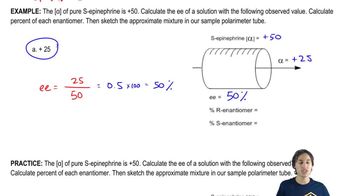The α- and β-anomers of glucose are shown here. In solution, these two epimers can interconvert through a process called mutarotation.
Given that α-D-glucose has a specific rotation of + 112.2° , why is the specific rotation of β-D-glucose not -112.2°? What molecule would have a specific rotation of -112.2°?







